Brakes!
If you recall in my previous post I drove home 6 hours from Los Angeles with barely functional brakes. I decided to see if I could get the brakes working properly to enjoy the car for a bit before I start to take it apart. One of the first things you should do in any classic car purchase is immediately service and inspect the brakes if you lack recent service documentation. My car came with a pile of receipts and shows almost every hydraulic brake component was changed in the past couple of years: front caliper, rear wheel cylinders, master cylinder… No record of new brake hoses so I decided to start there.
I ordered new Ate OE brake hoses for each corner of the car. The BMW part system can be accessed via RealOEM.com where you can enter the VIN for your vehicle and the correct part number system is loaded. I just started a How-To section on this site and “how to find the correct part numbers” is my first entry.
New right rear brake line installed.
After changing all the brakes hoses I then bled the system and the pedal felt firmer. Started up the car for a quick test drive and realized something was still very wrong. Pedal was firmer but I still had to push like hell to get any kind of braking. I quickly turned around and fellow E21 owners on the Facebook E21 CCA group said it is most likely a bad brake booster. The brake booster amplifies your leg’s brake pedal force by using the engine’s vacuum to apply more piston pressure into the master cylinder (here is a YouTube video description).
The BMW repair manual states that at idle, and at operating temperature, the engine intake vacuum line feeding the brake booster should be at -7psi minimum and up to -9psi when coming off throttle from 3,000rpm. That checked out fine via a vacuum gauge test. So now I had to learn how to diagnose a brake booster and sure enough I could pull a vacuum in the booster but as soon as I hit the brake pedal the vacuum would leak out.
Pulling a vacuum on the booster to see if it holds upon brake application. (It didn’t)
So now it was time to remove the brake booster and the BMW factory repair manual makes this look easy except they left out about 5 extra critical steps that I have now documented in a How-To here: 34 brake booster replacement. Many thanks to the members at the Facebook BMW E21 CCA group for pointing me in the right direction. You actually have to lift the left side of the engine up to create clearance to remove the booster! The factory repair manual writers in Munich conveniently left that part out. The image gallery below walks through the next part of my journey refurbishing the booster.
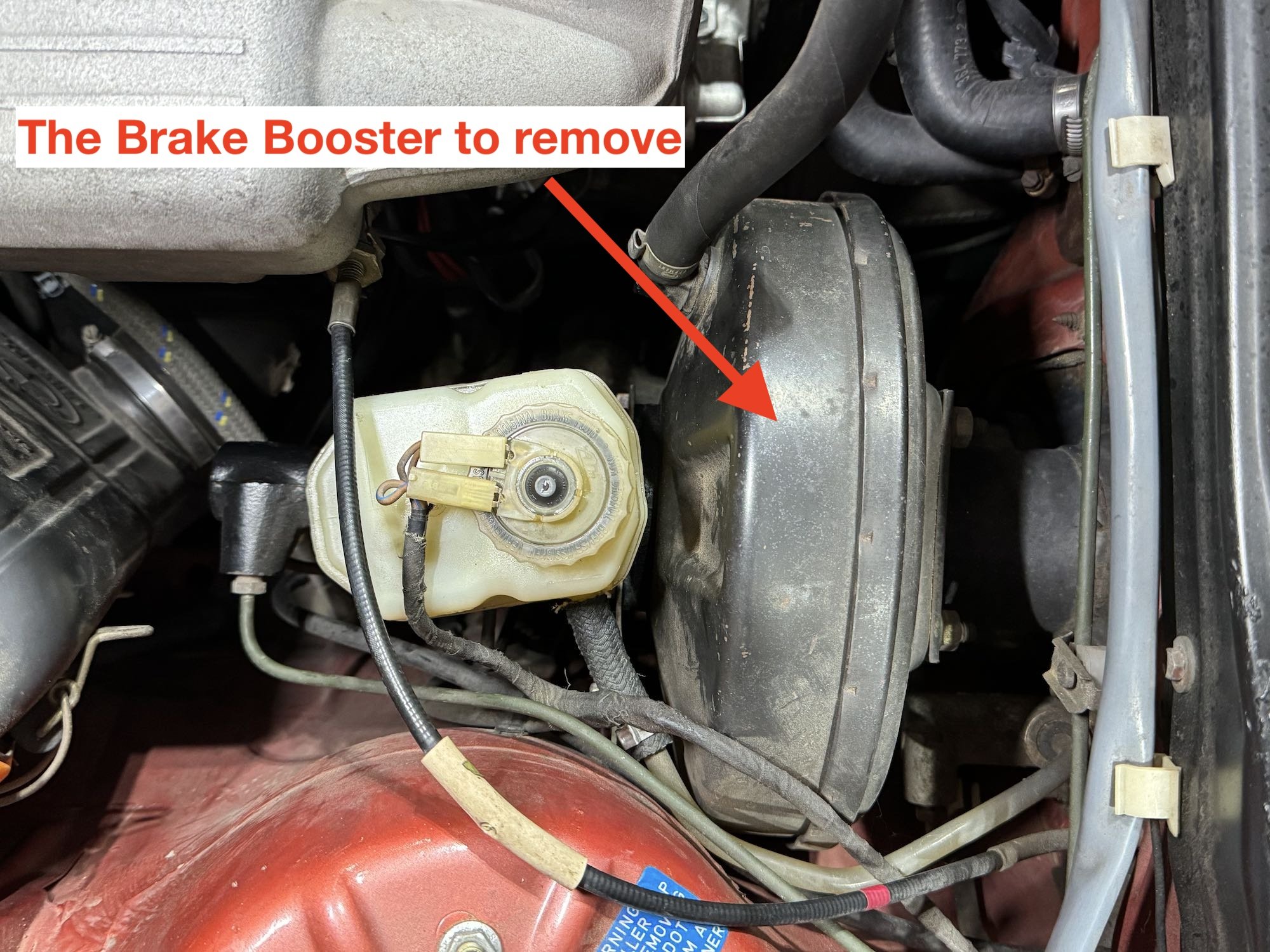
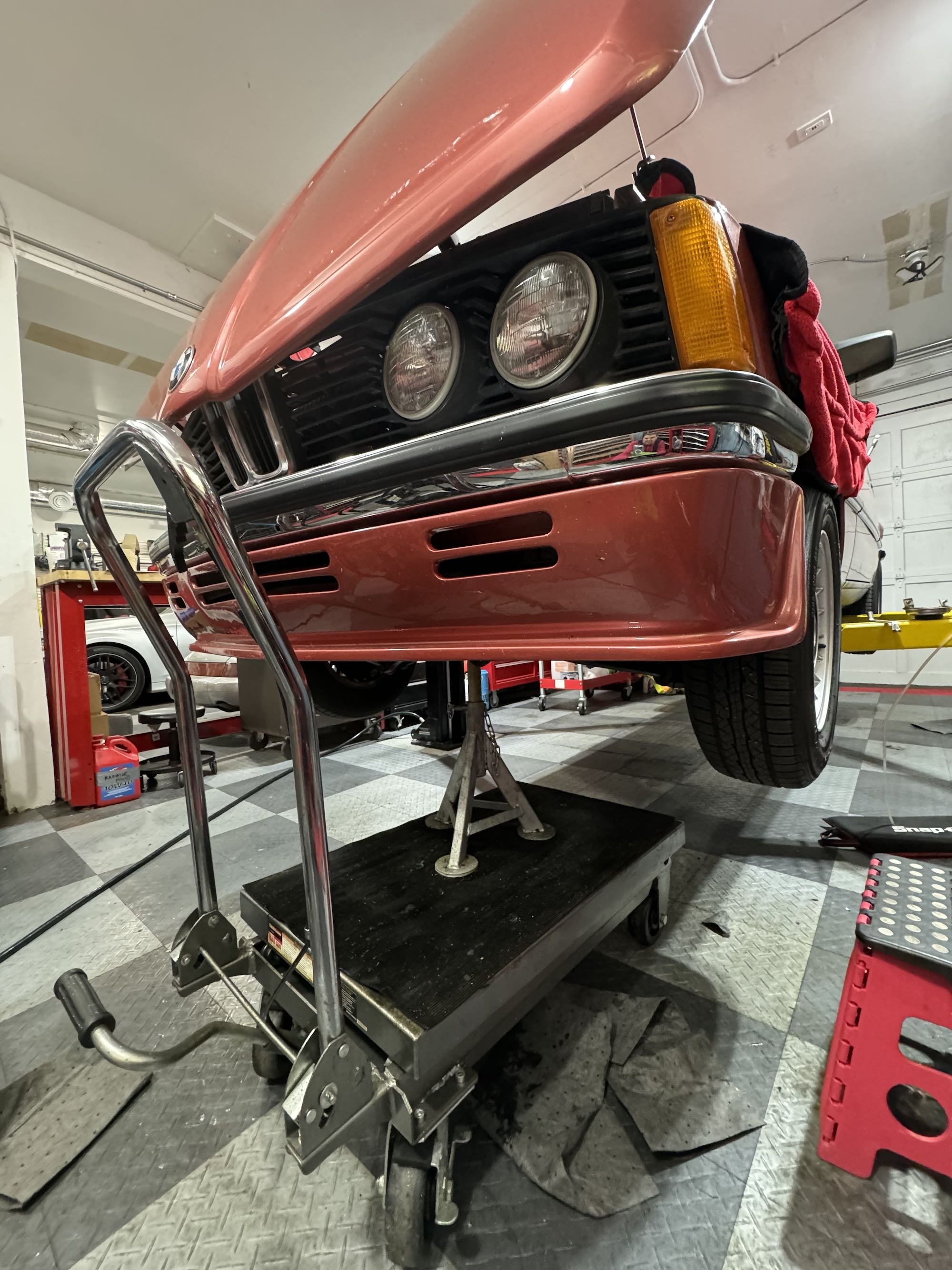

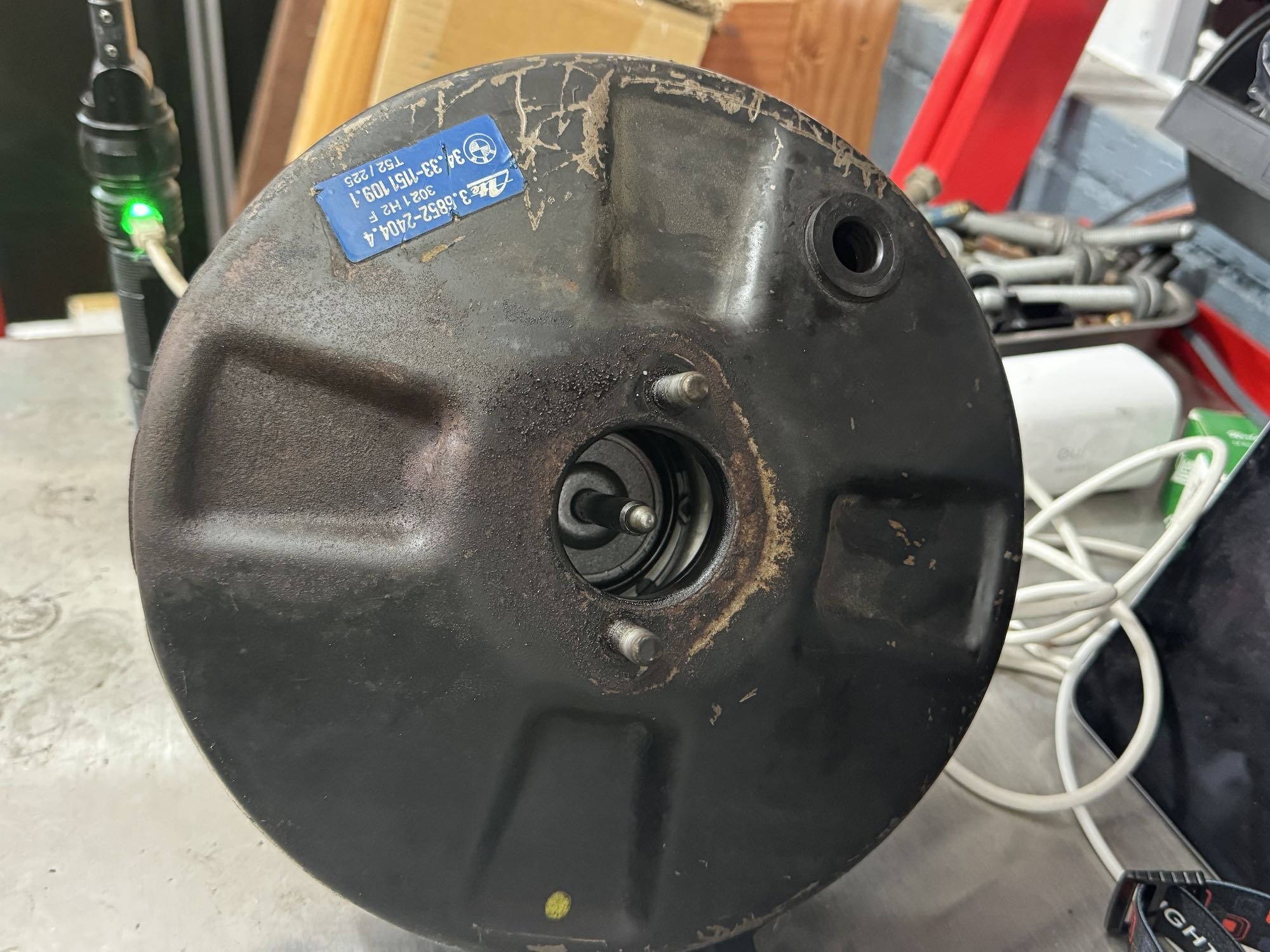
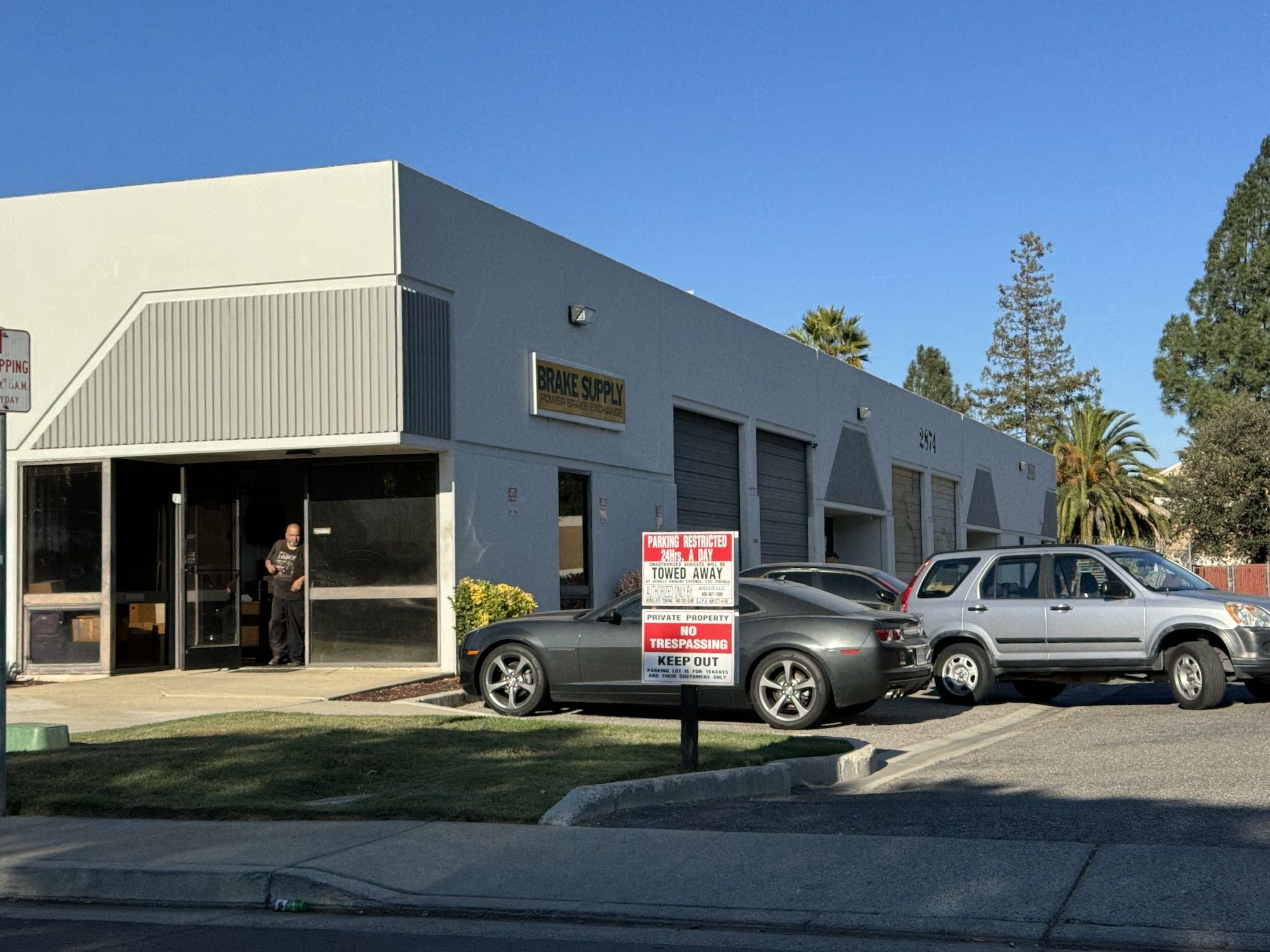

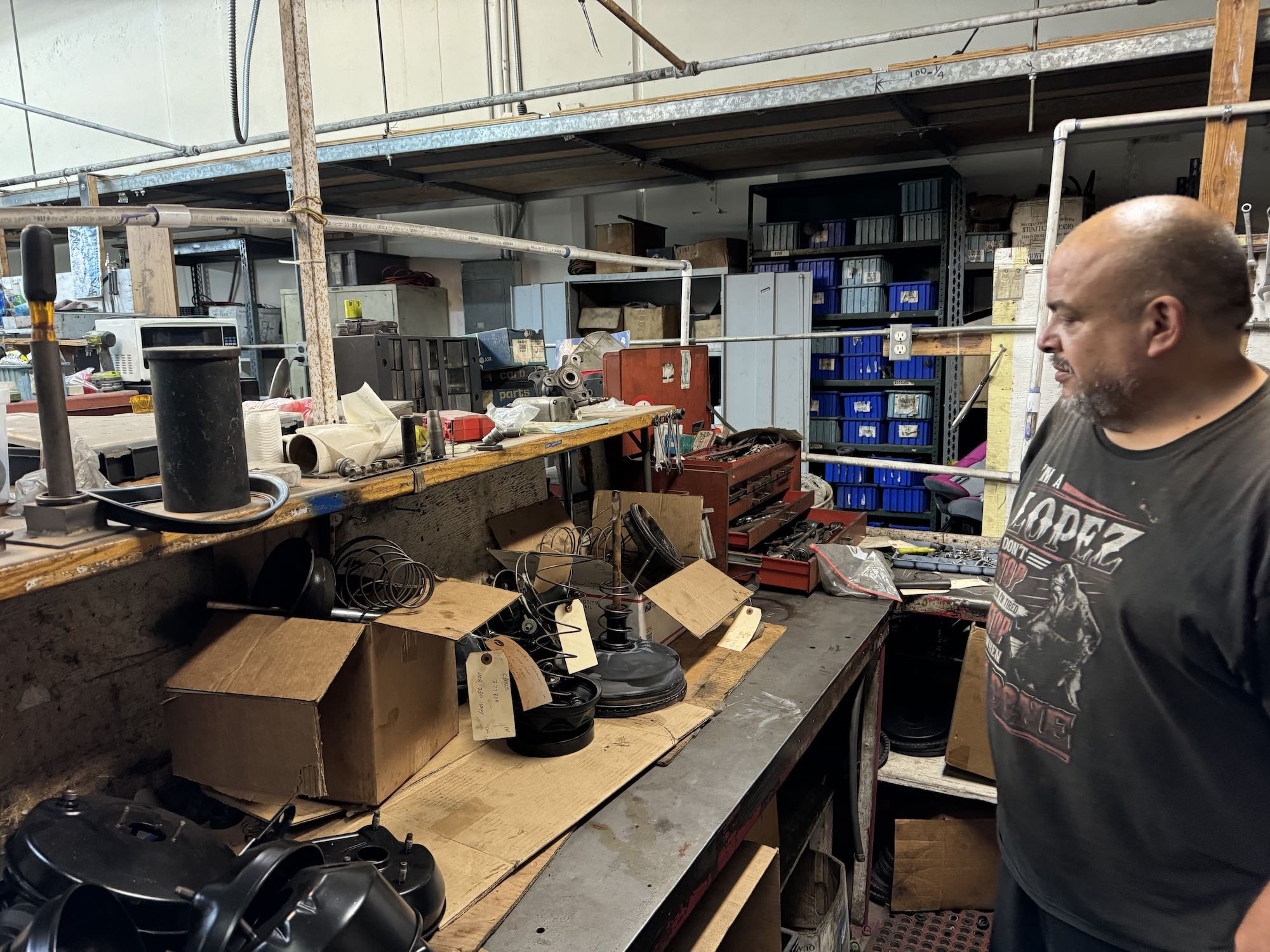
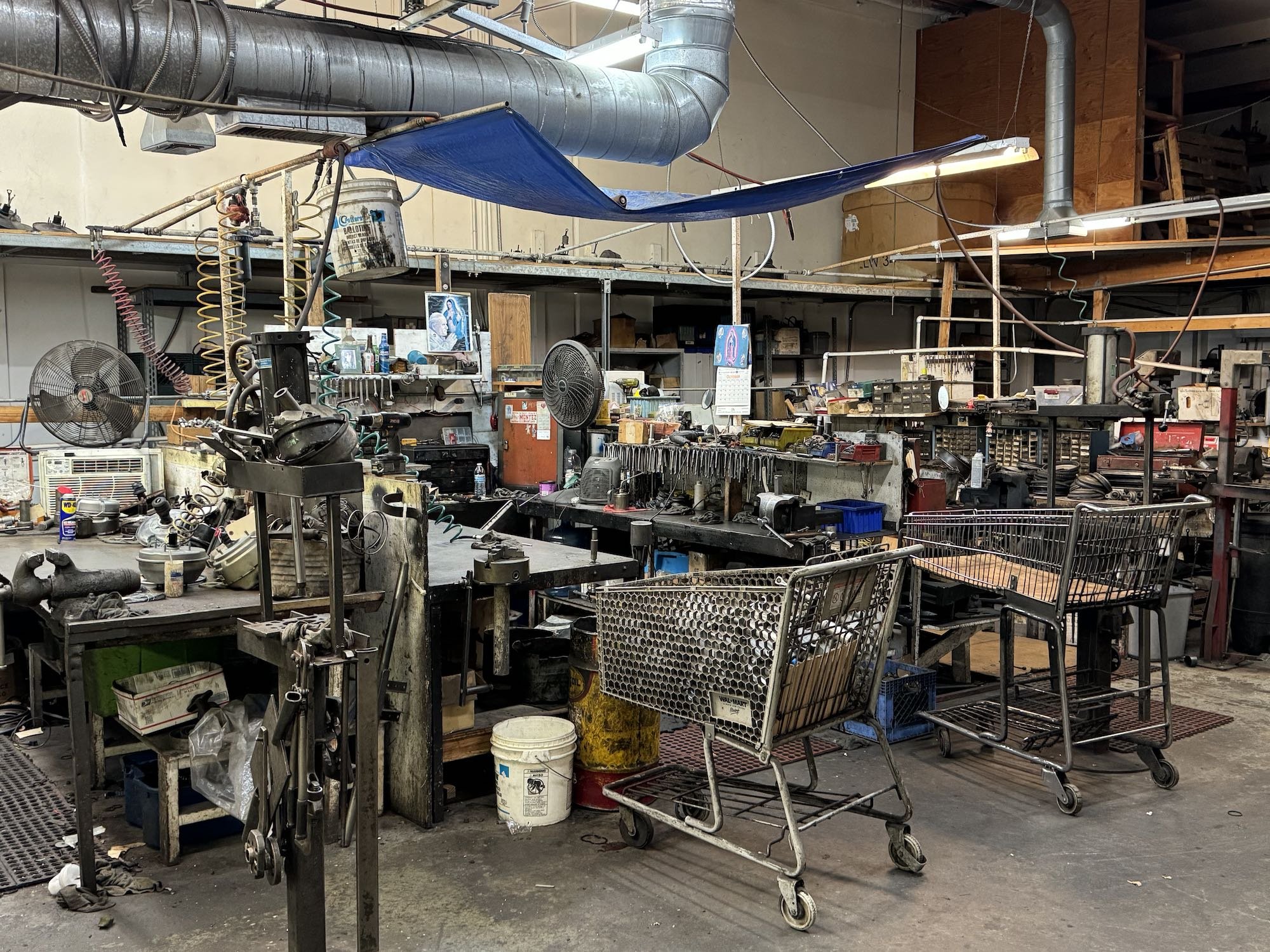
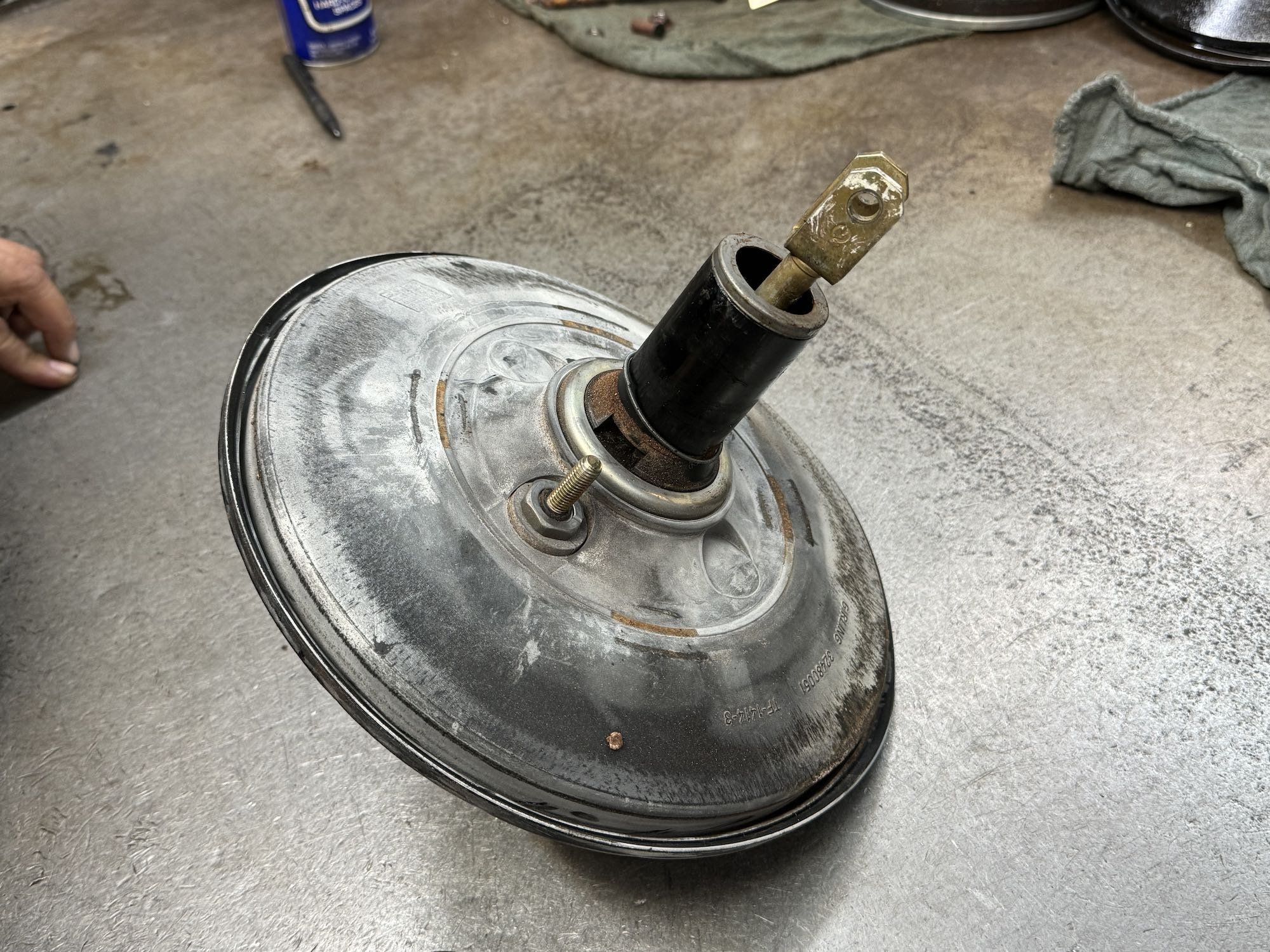
About a week later I got my refurbished brake booster back from Power Brake Exchange in San Jose, CA , powder coated black, and looking brand new. I was able to get it back into the car, bleed the brakes one more time, and get back out on the road. And finally I had brakes, really crappy 1982 brakes, but they could stop the car. Eventually I am going to put rear discs on the car and a big brake kit on the front. That is for another day. Today, on a beautiful Sunday afternoon, I was able to relax in the car, and drive local mountain roads in my slow BMW (maybe 90hp tops at this point, but that too will be fixed later). Today was a day to enjoy the car with the satisfaction of something I fixed myself.
Finally enjoying the car on a Sunday drive with proper brakes.



